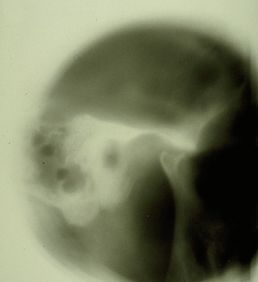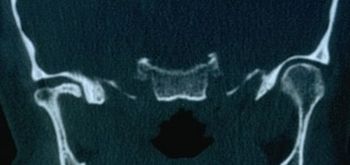Logic of medical language
Logic of medical language
Medical language plays a crucial role in clinical diagnosis but often leads to ambiguity and diagnostic challenges due to its limited semantic scope. Terms like "orofacial pain" can vary widely in meaning depending on the specialist interpreting them. For example, a neurologist might interpret it as neuropathic pain, while a dentist might focus on temporomandibular disorders (TMD). This ambiguity stems from the hybrid nature of medical language, which incorporates technical terms from both formal logic (e.g., mathematics, electrophysiology) and natural language, leading to inconsistencies in understanding.
This chapter explores the complexities of medical language by examining the clinical case of Mary Poppins, a patient with long-term orofacial pain. Her symptoms were diagnosed differently by various specialists, demonstrating how ambiguity in terms like "TMD" and "neuropathic pain" can lead to conflicting diagnoses. We address the need for a more precise and standardized approach to medical terminology, particularly in cases where multiple systems (e.g., masticatory and nervous systems) interact.
Furthermore, the concept of "encrypted machine language" is introduced as a metaphor for how the human body communicates complex information through symptoms and test results. This information, often conveyed through non-verbal signals such as electrophysiological tests, must be decrypted by clinicians to provide an accurate diagnosis. The chapter also highlights the importance of interdisciplinary approaches, combining inputs from different fields to reduce diagnostic errors and enhance patient care.
By addressing the limitations of medical language and emphasizing the integration of both verbal and machine-derived data, this chapter paves the way for a more nuanced understanding of clinical diagnostics. It calls for further exploration of how medical language can be refined to improve diagnostic precision, ultimately leading to better patient outcomes.
Medical language is an extended natural language
Language is essential in the medical field, but it can sometimes lead to misunderstandings due to its semantically limited nature and lack of coherence with established scientific paradigms. For instance, terms like "orofacial pain" may have significantly different meanings if interpreted through classical logic rather than formal logic.
The transition from classical to formal logic is not just an additional step, but it requires precise and accurate description. Despite advances in medical technology—such as electromyographs, cone beam computed tomography (CBCT), and digital oral scanning systems—there remains a need for refinement in medical language.
It's crucial to distinguish between natural languages (like English, German, Italian, etc.) and formal languages (like mathematics). Natural languages emerge spontaneously within communities, while formal languages are artificially created for specific applications in fields like logic, mathematics, and computer science. Formal languages have well-defined syntax and semantics, whereas natural languages, despite having grammar, often lack explicit semantics.
To keep the analysis dynamic, an exemplary clinical case will be examined through different language logics:
Clinical case and medical language logic
The patient, Mary Poppins (fictitious name), has been receiving multidisciplinary medical attention for over a decade, involving dentists, general practitioners, neurologists, and dermatologists. Her medical history is summarized as follows:
At 40, Mrs. Poppins noticed small spots of abnormal pigmentation on the right side of her face. Ten years later, after a skin biopsy during dermatology hospitalization, she was diagnosed with localized facial scleroderma (morphea) and prescribed corticosteroids. By age 44, she experienced involuntary contractions of the right masseter and temporal muscles, which increased in frequency and duration over time. At her first neurological evaluation, her face showed significant asymmetry and hypertrophy of the right masseter and temporal muscles. Various diagnoses were made, illustrating the limitations of medical language.
After several investigations—such as anamnesis, stratigraphy, and computed tomography (Figures 1, 2, and 3)—the dentist diagnosed "Temporomandibular Disorders" (TMD).[1][2][3] Meanwhile, the neurologist diagnosed "Neuropathic Orofacial Pain" (nOP), minimizing TMD as the primary cause. For objectivity, we refer to her condition as "TMDs/nOP."
We are thus faced with several questions that deserve thorough discussion, as they pertain to clinical diagnostics.
Medical language falls into a hybrid category—it arises from the expansion of everyday language by incorporating technical terminologies such as "neuropathic pain," "Temporomandibular Disorders," or "demyelination." This evolution does not separate it from the inherent ambiguity of natural language, which often lacks precision in critical contexts. For example, the term "disease," crucial in nosology, research, and practice, remains vague in its definition, which can lead to diagnostic uncertainty.
A core question arises: is disease related to the patient as an individual, or does it pertain to the system as a whole (i.e., the organism)? Can a patient who is deemed healthy at a given time coexist with a system that was structurally compromised at an earlier point ?
This perspective urges a reconsideration of disease as an evolutionary process rather than a static condition. The dynamic nature of health and disease demands a sophisticated, possibly quantitative, interpretation that factors in temporal variations across biological and pathological systems.
The notion of "language without semantics," treated as irrelevant, highlights a significant issue. Language's inherent semantic interdependence is vital for effective communication.[4]
In short, the debate on whether the patient is ill, or if it is her masticatory system exhibiting pathology, requires a detailed analysis from a medical standpoint. Distinguishing between systemic pathology (masticatory system as a whole) and localized pathology (e.g., TMJ) is key.
Clinical approach
(hover over the images)
Understanding of Medical Terminology
Understanding what "meaning" signifies is a complex topic. The Cambridge Dictionary defines it as "what something expresses or represents."[5] But this definition remains broad and leads to further questions, as different theories offer varied perspectives without a definitive answer.[6][7]
In linguistic theory, terms act as labels for objects, either concrete or abstract. For example, the word "apple" evokes a clear image of a fruit. But expressions like "orofacial pain" acquire different meanings depending on the context—for a dentist, a neurologist, or for the patient, Mary Poppins, herself.
In the case of Mary Poppins, the neurologist will frame "pain in the right half of the face" using terms like synapses and action potentials, while the dentist will focus on teeth and occlusion. This variation in meaning highlights the importance of context in diagnosis.
A deeper exploration of modern philosophy of meaning, such as Gottlob Frege's distinction between "extension" (all entities sharing a characteristic) and "intension" (attributes that define an idea), sheds light on how diagnostic errors may occur.[8]
For example, "pain" is a broad term with high extension but low intension. However, focusing on specific pain types (dental implants, pulpitis, neuropathic pain) increases intension and reduces extension.[9]
This shows how the vulnerability of medical language to semantic and contextual ambiguity can lead to significant diagnostic challenges.[10]
Ambiguity and Vagueness in Medical Language
Ambiguity in medical language occurs when terms have multiple meanings, leading to errors and inconsistencies in diagnosis. Both ambiguity and vagueness are underexplored in clinical practice, despite their significant impact on clinical guidelines.[11][12]
Doctors' interpretations of vague medical terms often differ, reducing uniformity in clinical practices compared to guidelines.[13]
Ambiguity and vagueness are important concepts in understanding challenges in clinical communication and diagnosis. Despite being discussed in linguistic and philosophical contexts, they are underexplored in medical practice, with significant impact on clinical guidelines and diagnostic decisions.
Ambiguity occurs when a word or phrase has multiple meanings. In medical language, it can appear in several forms:
Syntactic ambiguity: When a sentence structure allows different interpretations. For example, "the pain is caused by inflammation" could mean that pain is directly caused by inflammation, or that inflammation is just one contributing factor[14].
Semantic ambiguity: Terms like "neuropathic pain" can refer to either peripheral nerves or the central nervous system, leading to confusion without further specification[15].
Pragmatic ambiguity: When the context does not provide enough information, such as when a doctor says "this is a suspicious diagnosis" without specifying which diagnosis is being considered[16].
Vagueness refers to cases where there is no clear distinction between categories:
Clinical vagueness: The term "fever" is vague, as a temperature of 37.8°C might be considered febrile for an immunocompromised patient but not for a healthy individual[17].
Diagnostic vagueness: A concept like "syndrome" is often vague, such as with chronic fatigue syndrome, where symptoms are general and markers are unclear, leading to varied interpretations by different physicians[18].
Clinical Implications: Ambiguity and vagueness can negatively affect adherence to clinical guidelines, causing diagnostic errors and inconsistent treatments. For example, "conservative management" can be interpreted differently by doctors, leading to discrepancies in patient care[19].
Examples:
Ambiguity: "Orofacial pain" could mean a temporomandibular disorder (TMD) to a dentist, but neuropathic pain to a neurologist, leading to different diagnoses and treatments[20].
Vagueness: The term "disease" varies depending on the context, such as hypertension being classified as a disease with organ damage, but seen as a manageable risk factor without complications[21].
This leads to inefficiencies in decoding the "machine message" transmitted by the system, as in the case of Mary Poppins' orofacial pain. Next, we delve into the concept of "encrypted machine language" in the subsequent chapters.
Encryption
Imagine a brain sending a message in machine language (wave trains, ion field packets), and that this carries a message like "Ephaptic," which must be decrypted to translate into verbal language. Both the patient, with epistemic vagueness, and the doctor, constrained by their field of expertise, contribute to the distortion of the machine's original message.
Often, the system's message remains encrypted until symptoms become severe enough for a diagnosis to be made.
(Answer: Consider the Gate Control phenomenon.)
However, this concept brings our attention to an extraordinarily explanatory phenomenon called Gate Control. When a child is hit on the leg while playing soccer, in addition to crying, the first action they take is to rub the painful area extensively, to alleviate the pain. The child acts unconsciously, stimulating tactile receptors and closing the "gate" to the nociceptive entry of C fibers, thus reducing the pain; this phenomenon was discovered only in 1965 by Ronald Melzack and Patrick Wall.[22][23][24][25][26].
In the case of encrypted language, much like in computers, the brain also encrypts and decrypts information. For example, researchers have explored how synaptic memory might be digitally stored in the brain.[27]
Final Considerations
The role of language in diagnosis is a critical issue in medicine. Diagnostic accuracy heavily relies on precise communication between healthcare providers and patients, as well as among clinicians. This is where the ambiguity and vagueness of medical language become particularly problematic.
The ICD-9 (International Classification of Diseases) lists 6,969 disease codes, which increased to 12,420 in the ICD-10[28]. While this expansion reflects the increased complexity of modern medical practice, it also highlights the challenges in standardizing diagnostic criteria. The large number of codes underscores the need for precise terminology and unambiguous language, as even slight misunderstandings can lead to misclassification of diseases and, consequently, incorrect treatments.
Studies estimate that diagnostic errors contribute to 40,000 to 80,000 deaths annually in the United States alone[29]. These errors often stem from misinterpretations of clinical signs, ambiguous language in medical records, or misunderstandings between doctors and patients. As a result, both over-diagnosis and under-diagnosis become common, increasing the risk of inappropriate treatments or failure to provide necessary care.
To address these challenges, Charles Sanders Peirce's triadic approach—abduction, deduction, and induction—offers a robust framework for improving diagnostic reasoning. In Peirce's model, abduction is the process of generating hypotheses based on observed signs and symptoms. Deduction involves deriving specific predictions from these hypotheses, while induction tests the hypotheses through further observation or experimentation[30]. This approach emphasizes the importance of careful reasoning in the diagnostic process and highlights how linguistic precision is vital for accurate medical decision-making.
Furthermore, modern diagnostic processes increasingly rely on machine language and non-verbal signals, especially in the era of digital health technologies. Electrophysiological tests, imaging results, and genetic data are forms of "machine language" that require interpretation by clinicians. While these data streams provide invaluable insights, they also add layers of complexity to the diagnostic process, particularly when combined with vague or ambiguous verbal reports from patients. As such, a clinician must integrate both verbal and non-verbal information to form a holistic understanding of a patient's condition.
In this chapter, we explored the complexities of medical language and its implications for clinical diagnosis. We also introduced the concept of "encrypted machine language" a metaphor for the ways in which the human body communicates information through symptoms and signs that must be decripted. In future chapters, we will delve deeper into the logic of medical language, examining how time, logic, and the concept of assembler codes can be used to improve diagnostic accuracy. These discussions will be crucial in understanding how medical practitioners can mitigate the effects of ambiguity and vagueness in clinical communication, ultimately leading to more precise and effective patient care.
- ↑ Tanaka E, Detamore MS, Mercuri LG, «Degenerative disorders of the temporomandibular joint: etiology, diagnosis, and treatment», in J Dent Res, 2008».
DOI:10.1177/154405910808700406 - ↑ Roberts WE, Stocum DL, «Part II: Temporomandibular Joint (TMJ)-Regeneration, Degeneration, and Adaptation», in Curr Osteoporos Rep, 2018».
DOI:10.1007/s11914-018-0462-8 - ↑ Lingzhi L, Huimin S, Han X, Lizhen W, «MRI assessment and histopathologic evaluation of subchondral bone remodeling in temporomandibular joint osteoarthritis: a retrospective study», in Oral Surg Oral Med Oral Pathol Oral Radiol, 2018».
DOI:10.1016/j.oooo.2018.05.047 - ↑ Sadegh-Zadeh Kazem, «Handbook of Analytic Philosophy of Medicine», Springer, 2012».
- ↑ Cambridge Dictionary online
- ↑ Blouw P, Eliasmith C, «Using Neural Networks to Generate Inferential Roles for Natural Language», in Front Psychol, 2018».
DOI:10.3389/fpsyg.2017.02335 - ↑ Green K, «Dummett: Philosophy of Language», 2001».
- ↑ Wikipedia entry
- ↑ Porporatti AL, Bonjardim LR, «Pain from Dental Implant Placement, Inflammatory Pulpitis Pain, and Neuropathic Pain Present Different Somatosensory Profiles», in J Oral Facial Pain Headache, 2017».
DOI:10.11607/ofph.1680 - ↑ Jääskeläinen SK, «Differential Diagnosis of Chronic Neuropathic Orofacial Pain», in J Clin Neurophysiol, 2019».
DOI:10.1097/WNP.0000000000000583 - ↑ Schick F, «Ambiguity and Logic», Cambridge University Press, 2003».
- ↑ Teigen KH, «The language of uncertainty», 1988».
- ↑ Codish S, Shiffman RN, «A model of ambiguity and vagueness in clinical practice guideline recommendations», 2005».
- ↑ Codish, S., & Shiffman, R. N. (2005). A model of ambiguity and vagueness in clinical practice guideline recommendations. AMIA Annual Symposium Proceedings, 2005, 146-150.
- ↑ Schick, F. (2003). Ambiguity and Logic. Cambridge University Press.
- ↑ Teigen, K. H. (1988). The language of uncertainty. Acta Psychologica, 67, 129-138.
- ↑ Jääskeläinen, S. K. (2019). Differential Diagnosis of Chronic Neuropathic Orofacial Pain: Role of Clinical Neurophysiology. Journal of Clinical Neurophysiology, 36(6), 467-473.
- ↑ Porporatti, A. L., et al. (2017). Pain from Dental Implant Placement, Inflammatory Pulpitis Pain, and Neuropathic Pain Present Different Somatosensory Profiles. Journal of Oral & Facial Pain and Headache, 31(3), 229-236.
- ↑ Codish, S., & Shiffman, R. N. (2005). A model of ambiguity and vagueness in clinical practice guideline recommendations. AMIA Annual Symposium Proceedings, 2005, 146-150.
- ↑ Sadegh-Zadeh, K. (2012). Handbook of Analytic Philosophy of Medicine. Springer.
- ↑ Jääskeläinen, S. K. (2019). Differential Diagnosis of Chronic Neuropathic Orofacial Pain: Role of Clinical Neurophysiology. Journal of Clinical Neurophysiology, 36(6), 467-473.
- ↑ Melzack R, «The McGill Pain Questionnaire: major properties and scoring methods», in Pain, 1975».
PMID:1235985
DOI:10.1016/0304-3959(75)90044-5 - ↑ Melzack R, «Phantom limbs and the concept of a neuromatrix», in Trends Neurosci».
PMID:1691874
DOI:10.1016/0166-2236(90)90179-e - ↑ Melzack R, «From the gate to the neuromatrix», in Pain, 1999».
DOI:10.1016/s0304-3959(99)00145-1 - ↑ Melzack R, Wall PD, «On the nature of cutaneous sensory mechanisms», in Brain, 1962».
PMID:14472486
DOI:10.1093/brain/85.2.331 - ↑ Melzack R, Wall PD, «Pain mechanisms: a new theory», in Science, 1965».
PMID:5320816
DOI:10.1126/science.150.3699.971 - ↑ Petersen C, Malenka RC, «All-or-none potentiation at CA3-CA1 synapses», 1998».
- ↑ Stanley DE, Campos DG, «The Logic of Medical Diagnosis», in Perspect Biol Med, 2013».
- ↑ Leape LL, «What Practices Will Most Improve Safety?», 2002».
- ↑ Vanstone M, «Experienced Physician Descriptions of Intuition in Clinical Reasoning: A Typology», 2019».





